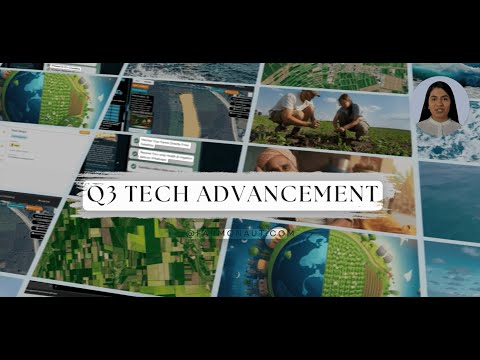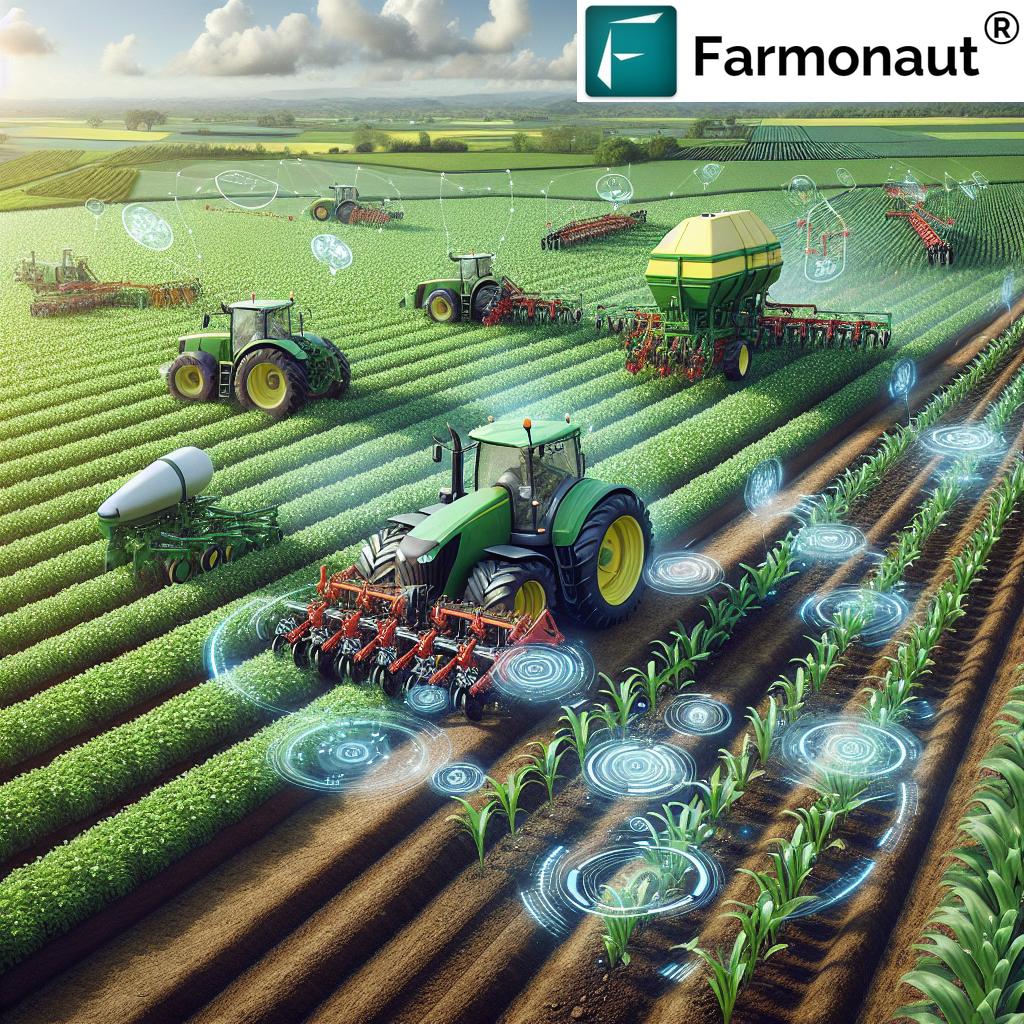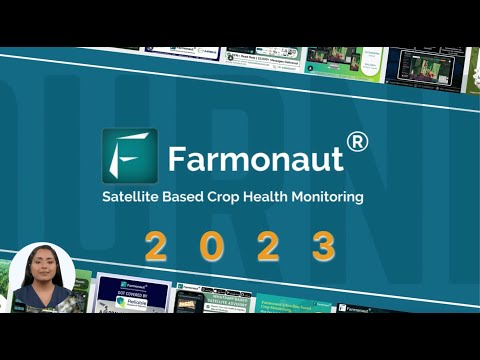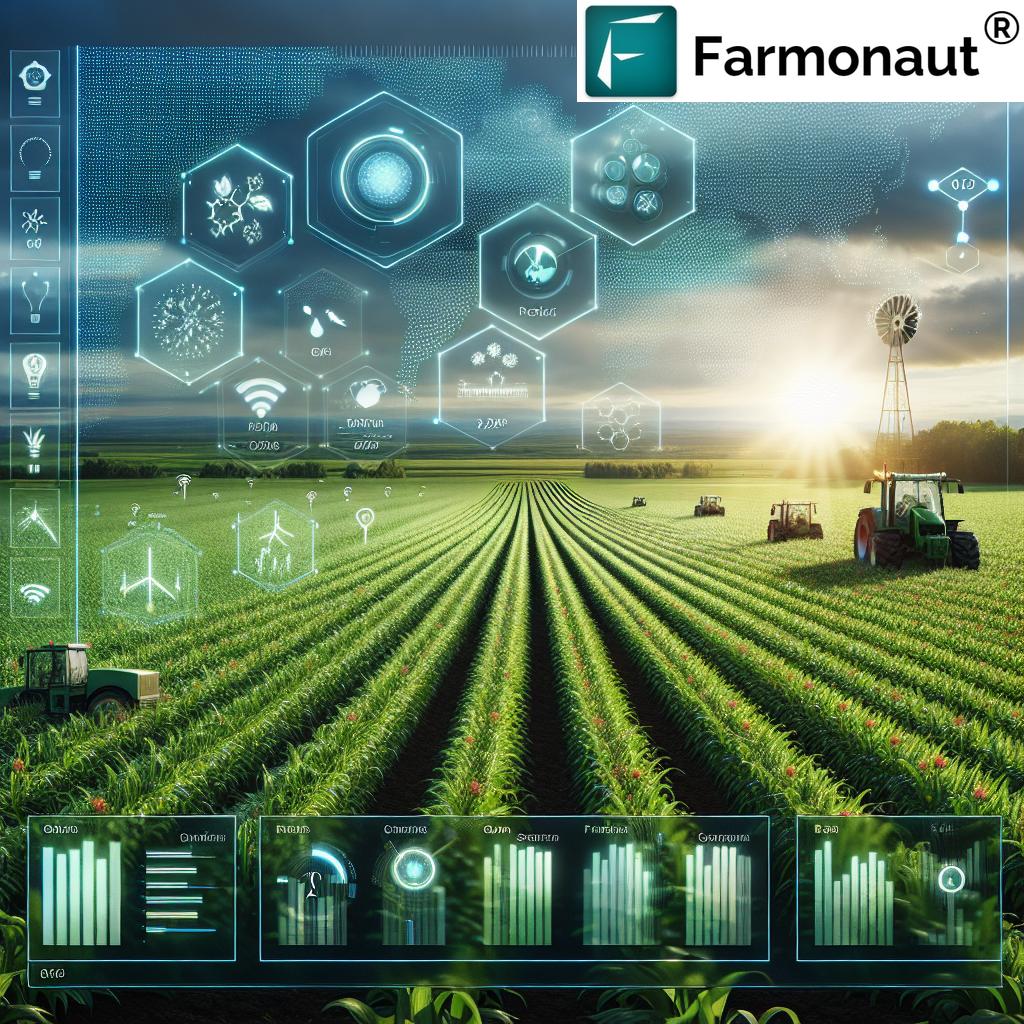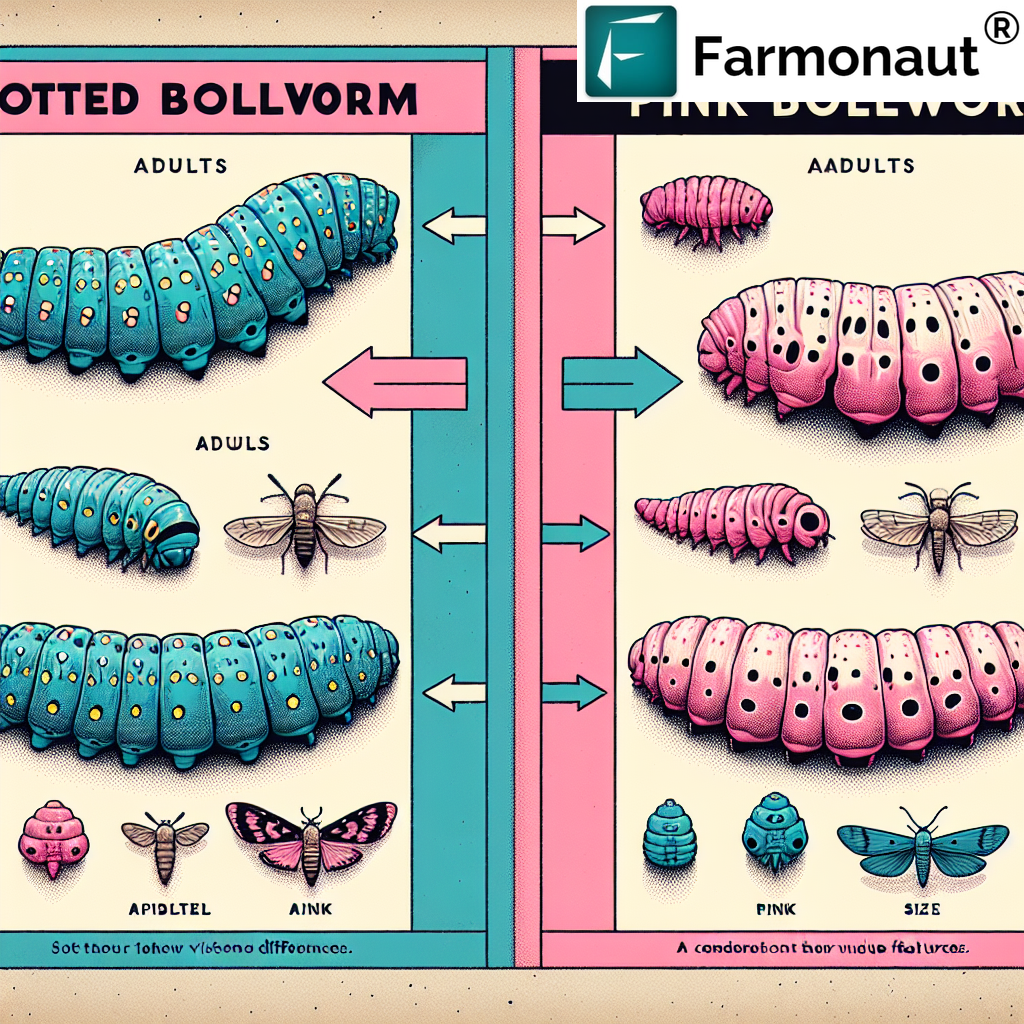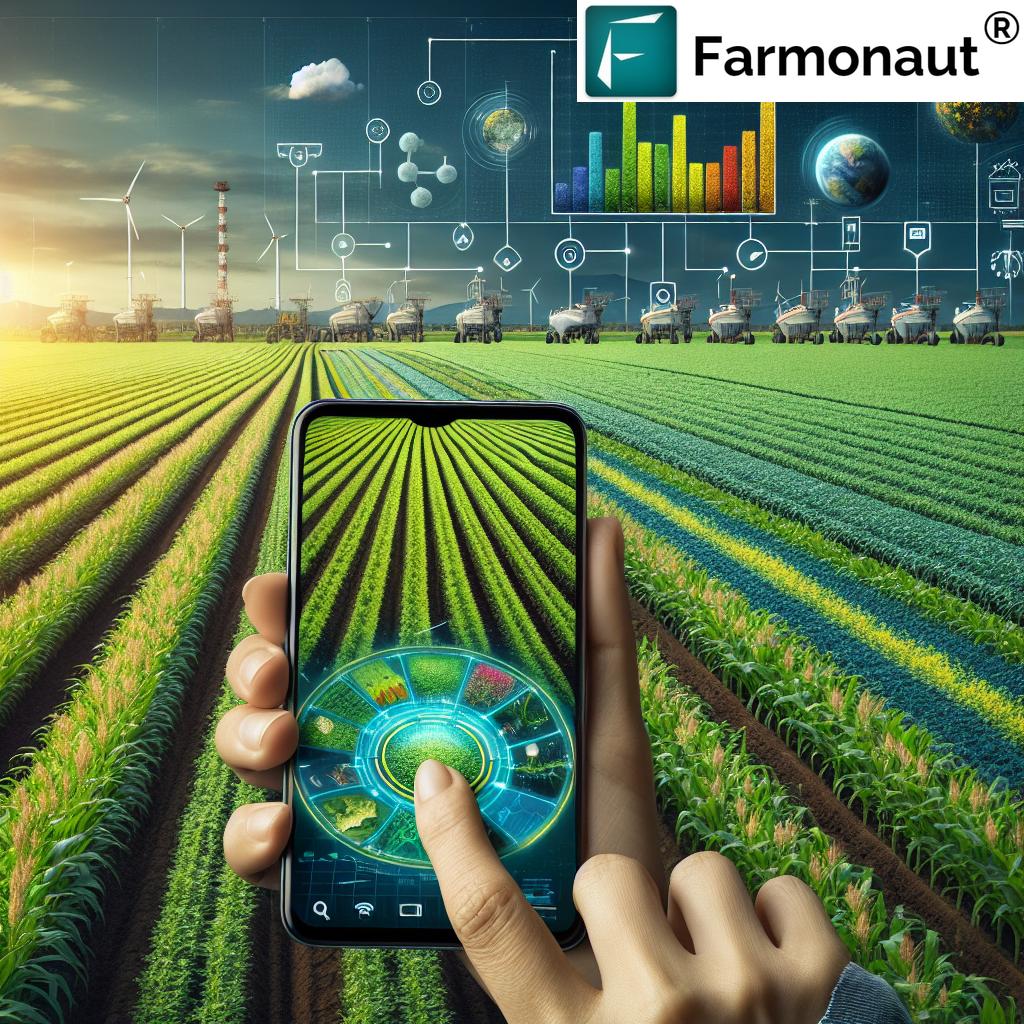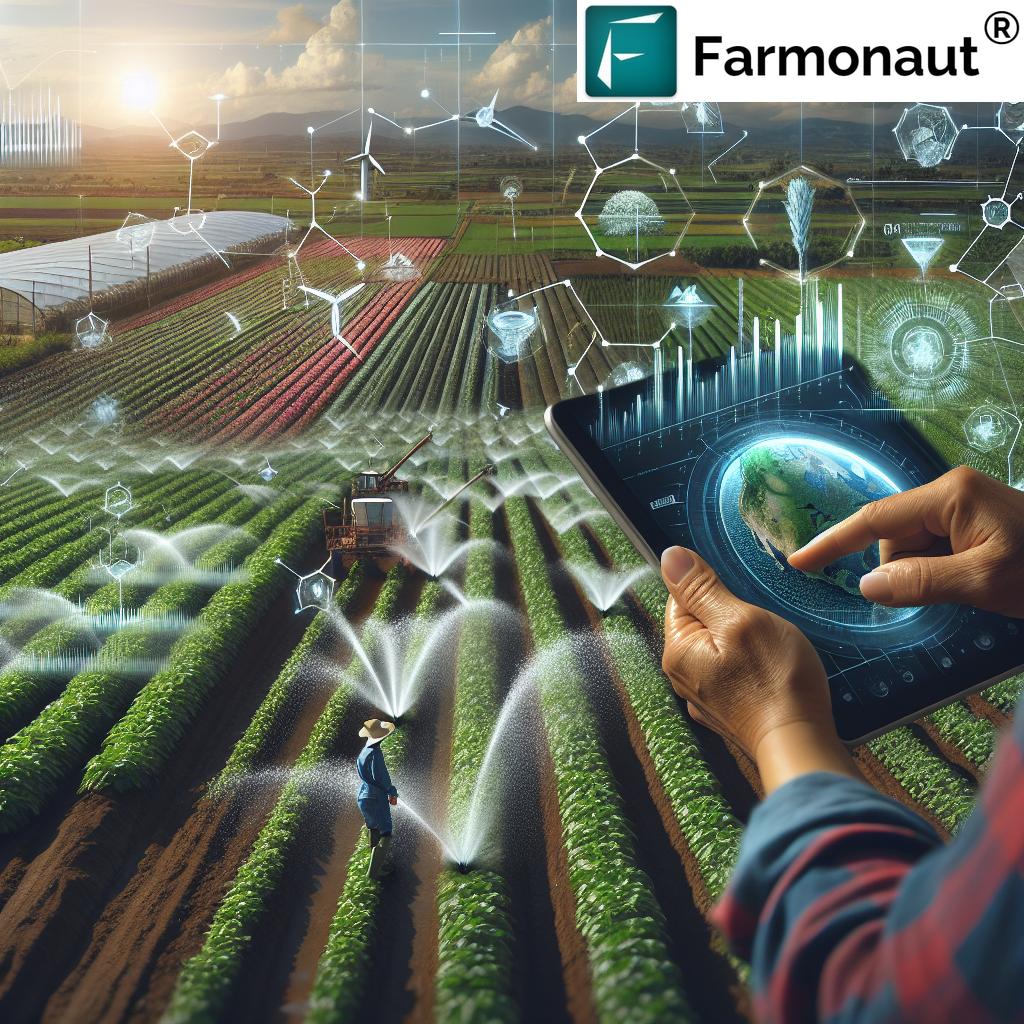Farm Equipment: 7 Game-Changing Trends for 2024
Meta Description: Farm Equipment plays a pivotal role in modern agriculture, enhancing efficiency, productivity, and sustainability. Explore 7 game-changing trends for 2024 and how advanced machinery and precision technology drive farming’s future.
- Introduction: The Evolution of Farm Equipment
- Traditional Farm Implements and Mechanization
- Modern Farm Equipment & Key Agricultural Machinery Innovations
- Farm Equipment: 7 Game-Changing Trends for 2024
- How Farmonaut Empowers Precision Agriculture
- Comparison Table: 2024 Farm Equipment Trends and Impacts
- Impact on Labor and Workforce in Agriculture
- Future Trends, Challenges & Sustainable Farming Practices
- Frequently Asked Questions (FAQs)
- Conclusion
“In 2024, precision agriculture equipment can boost crop yields by up to 20% through advanced data-driven techniques.”
Introduction: The Evolution of Farm Equipment
Farm equipment has seen a remarkable transformation from the days when our ancestors tilled soils with simple hoes and plows. Today, innovation defines every corner of agriculture, from seeders that plant with surgical accuracy to autonomous tractors and precision agriculture technology that deliver unmatched efficiency. As the world’s population grows and demand for food surges, the agriculture industry must embrace advanced machinery and sustainable practices to increase crop production, minimize labor, and preserve environmental health.
Our exploration into Farm Equipment: 7 Game-Changing Trends for 2024 will help us understand how these technologies are not just changing the face of farming, but also empowering us—farmers, agribusinesses, and agricultural professionals—to make better, evidence-driven decisions that meet global food challenges and drive prosperity for all.
Traditional Farm Implements and Mechanization
How Traditional Tools Set the Foundation for Farm Equipment
Historically, agriculture was rooted in manual labor, using implements like plows, harrows, and basic hoes. These tools were crucial for tilling soil, preparing for planting, breaking soil clumps, and covering seeds. However, these implements had limitations in terms of speed, scale, and labor intensity:
- Plows (Primary Tillage): Used to break and turn soil layers, improving aeration and root penetration.
- Harrows: Helped further break up soil clumps and prepare seedbeds.
- Hoes: Essential for small-scale weeding and shallow cultivation.
These hand-operated implements, although effective for small plots, were insufficient to keep up with growing agricultural demands and population growth. Their slow operation and reliance on manual labor ultimately spurred the need for mechanization.
The Industrial Revolution and the Mechanization Shift
The Industrial Revolution marked a pivotal shift by introducing mechanized farm equipment. Tractors became the cornerstone, replacing animal labor and enabling the operation of various attachments. This spark in agricultural machinery innovation gave birth to an array of advanced tools that rapidly elevated productivity and efficiency:
-
Planters and Seeders: Designed to sow seeds at precise depths and intervals, promoting optimal germination and crop growth
(Learn more from Wikipedia). -
Cultivators: Used for secondary tillage, these machines stir and pulverize soil, assist in weed control, and improve soil aeration
(Details here). -
Sprayers: Machinery for the application of pesticides, herbicides, fertilizers, and other chemicals, now enhanced with GPS for precision
(More info). -
Harvesters (e.g., Forage Harvesters): These machines efficiently collect and process crops such as corn and grass, converting them into silage for livestock feed
(About Forage Harvesters).
This mechanization revolution wasn’t just about replacing animal labor. It marked a development curve towards advanced farming tools, setting the stage for even more radical innovations.
Modern Farm Equipment & Key Agricultural Machinery Innovations
From Mechanization to Smart Technology
The 21st century has witnessed breakthroughs in precision agriculture technology, with smart, connected, and eco-friendly machinery built to increase efficiency, sustainability, and productivity. Below are some of the most transformative innovations that now define modern farm equipment:
-
Autonomous Tractors & Drones:
- Self-driving tractors and aerial drones automate planting, spraying, and monitoring tasks, reducing labor dependency and human error.
- They enable precision application of chemicals and data-driven resource allocation.
- Read about the latest autonomous tractor launches
-
Smart Sensors and IoT Devices:
- Integration of sensors provides real-time soil, moisture, and crop health data to optimize planting, irrigation, and chemical usage.
- Decision-making is strengthened by AI and Big Data analytics.
- See recent tech innovations on display
-
Electric and Hydrogen-Powered Tractors:
- With environmental sustainability becoming paramount, electric tractors and hydrogen-fueled alternatives now offer clean, silent operation and lower emissions.
- Perfect examples include models from New Holland and John Deere.
-
AI & Data-Driven Farm Management:
- Advanced agricultural AI systems analyze multispectral images, weather data, and equipment input to optimize planting, reduce input waste, and enhance yields.
With these agricultural machinery innovations, the goal is clear: efficient, sustainable, and highly productive farms, everywhere on the globe.
Farm Equipment: 7 Game-Changing Trends for 2024
Let’s deep dive into 2024’s most impactful farm equipment trends, each one setting the standard for efficiency, productivity, resource management, precision, and sustainability in modern agriculture.
“Over 60% of new farm machinery in 2024 features automated guidance systems for improved efficiency and sustainability.”
1. Autonomous Tractors and Automated Machinery
Autonomous tractors are revolutionizing how we approach farming. These self-driving machines use AI, sensors, GPS, and advanced software to navigate fields, perform planting, spraying, and even harvesting with minimal to zero human supervision. As labor availability declines, such automation in agriculture is crucial for scaling operations and ensuring consistent, precise, and efficient work.
- Benefits: Lower labor costs, 24/7 operation capability, improved precision especially for planting and chemical application, and minimization of human error.
- Farmonaut Fleet & Resource Management Tools:
Optimize your machines and farm fleet using advanced tracking, cost-reduction, and integrated reporting solutions—ideal for large-scale agribusinesses focused on farm machinery for efficiency.
2. Precision Agriculture Technology & Smart Sensors
Precision agriculture equipment integrates a wide range of sensors, IoT devices, and AI analytics to monitor soil, crop health, moisture, and weather. With accurate, real-time data, farmers can:
- Apply fertilizer, water, and pesticides exactly where needed, reducing costs and environmental impact.
- Boost yields while using fewer resources, supporting sustainable farming practices.
- Farmonaut Satellite-Based Crop Monitoring: Get real-time NDVI vegetation health maps, soil moisture levels, and rapid stress detection to inform irrigation, nutrient, and pest control decisions—all from your mobile device or web portal.
Discover mobile-friendly farm management now!
3. Smart & Electric Tractors
Electric tractors and hybrid models minimize soil compaction, reduce carbon emissions, and offer silent operation. Coupled with smart systems, these tractors provide:
- Remote diagnostics, route optimization, and fuel/data management via fleet platforms.
- Environmental and operating cost benefits over traditional diesel models.
Farmonaut Carbon Footprint Tracking:
Accurately track and reduce emissions across your operations—support sustainability goals and ensure regulatory compliance.
4. Blockchain-Based Traceability Solutions
As food safety and origin traceability grow in importance, blockchain enables transparent, tamper-proof tracking of every stage of crop production.
- Increases trust among consumers, retailers, and exporters.
- Reduces fraud and simplifies record-keeping for compliance.
- See Farmonaut’s Traceability Platform:
Power your supply chain transparency in food, textiles and beyond, supporting fair trade and brand reputation.
5. AI-Driven Farm Advisory & Decision Support
Artificial intelligence (AI) now powers personalized farm advisory—turning big data into actionable, field-level insights.
- Analyzes satellite, weather, and management data to offer tailored guidance for planting, fertilizing, irrigation, and pest management.
- Reduces risk, supports informed decisions, and increases yields sustainably.
- Try Jeevn AI Advisory by Farmonaut for hyper-local alerts, real-time crop risk identification, and strategic resource planning.
6. Advanced Sprayers and Applicators with Precision Control
Today’s sprayers aren’t just about coverage—they’re about targeted application. These systems use GPS and AI to:
- Minimize chemical waste by directing doses only where needed (weed, pest, and disease hotspots).
- Reduce soil and waterway contamination, aligning with eco-friendly regulations.
- Enhance worker and consumer safety by lowering toxic exposure risks.
7. Fleet Management & Large-Scale Farm Operation Tools
As farms grow in size and complexity, integrated fleet management and large-scale farm management tools become vital for operational excellence.
- These platforms enable scheduling, tracking, fuel optimization, automated reporting, and predictive maintenance for all farm machinery.
- Farmonaut Large-Scale Farm Management tools
give agribusinesses and cooperatives a central dashboard for multi-field operations, enhancing outcomes for every worker and equipment unit in the fleet.
How Farmonaut Empowers Precision Agriculture & Sustainable Farming
- Affordable, satellite-powered crop health, soil, and irrigation monitoring—accessible via Android, iOS, and web apps
- AI-based farm advisory with Jeevn AI—personalized, real-time agricultural guidance for farmers worldwide
- Blockchain traceability—ensures product transparency, builds supply chain trust
- Fleet, resource, and emissions tracking—optimize machine use and reduce carbon footprint
- Data-driven decisions for smarter, more sustainable farms
Get started today with scalable, subscription plans to meet the needs of smallholder farms, cooperatives, and large agribusinesses:
Comparison Table: 2024 Farm Equipment Trends and Impacts
| Trend Name | Type of Equipment Involved | Key Technology/Feature | Estimated Adoption Rate (2024) | Estimated Efficiency Gain (%) | Impact on Sustainability | Benefits to Farmers |
|---|---|---|---|---|---|---|
| Autonomous Tractors | Self-driving tractors, robotic implements | AI navigation, GPS-guided automation | 30% | 30-40% | Reduced fuel use, lower emissions, optimized input application | Reduced labor, more uptime, higher accuracy, lower costs |
| Precision Agriculture | Sensor-driven tools, drones, farm management software | IoT, multi-spectral satellite imagery, AI analytics | 45% | 15-25% | Reduced chemicals, water, optimized soil | Higher yields, less waste, improved profits |
| Electric Tractors | Electric/hybrid tractors and sprayers | Electric drivetrains, low-emission systems | 10% | 10-15% | Zero on-site emissions, improved air/soil health | Lower running costs, improved operator comfort |
| Blockchain Traceability | Digital traceability systems | Blockchain-backed product tracking | 6% | Up to 8% | Reduced fraud/waste, better transparency | Greater market access, trusted premium brands |
| AI Farm Advisory | Mobile/web advisory platforms | AI-driven decision support | 12% | 12-16% | Less fertilizer waste, more targeted action | Increased yields, reduced risk & uncertainty |
| Precision Sprayers | GPS-Guided Applicators | Variable rate, AI zone mapping | 25% | 17-23% | Prevents over-application, protects ecosystem | Lower chemical costs, fewer crop losses |
| Fleet Management Tech | Connected machines, management dashboards | IoT logistics, predictive maintenance algorithms | 41% | 18-25% | Lower fuel waste, longer equipment life | Optimized scheduling, lower downtime/costs |
Impact on Labor and Workforce in Agriculture
The widespread adoption of modern farm equipment has transformed the agricultural workforce in several ways:
- Labor Efficiency: Automated machinery allows a single worker to manage much larger areas, reducing overall manpower requirements.
- Skill Upgradation: The shift from manual operation to managing high-tech machines increases the need for operators trained in digital platforms, GPS guidance, and troubleshooting.
- Economic Considerations: Upfront investments in advanced machinery can be high, but ongoing benefits like reduced labor and input costs often result in a fast return on investment—especially with scalable, subscription-based software solutions.
Explore crop loan & insurance verification supported by satellite monitoring to help finance your technology upgrades risk-free!
Elevate your operations with Farmonaut’s
Large-Scale Farm Management Platform
for plantation, forest, and agro-cooperative advisory.
Future Trends, Challenges & Sustainable Farming Practices
Looking ahead, we see agriculture embracing even more advanced trends to meet future food, labor, and sustainability demands. What should we expect?
-
Deeper AI Integration:
The next generation of farm equipment will feature on-board decision-making, adaptive control systems, and real-time response to crop and soil changes. AI will not just assist but autonomously operate precision equipment.
(Read more at FT) -
Sustainability Technologies:
Ongoing innovation will further reduce soil compaction, minimize chemical runoff, and track greenhouse gas emissions in real time. Electrification and eco-design are set to expand to every aspect of farm machinery. -
Data-Driven Tools:
Equipment will share data seamlessly, providing holistic insight into crop production, water use, and resource allocation. This will help all of us—regardless of farm size—make decisions with higher certainty. -
Challenges:
Accessibility for smallholders, upskilling workforce, and managing up-front costs remain hurdles. Scalable, subscription-based tech platforms (like Farmonaut) are designed to bridge this affordability and expertise gap.
Frequently Asked Questions (FAQs)
How does modern farm equipment enhance efficiency?
Modern farm equipment leverages automation, AI-driven guidance, and sensor data to reduce manual labor, minimize resource waste, and perform field operations like planting, spraying, and harvesting more quickly and accurately. This results in higher productivity and cost-efficiency for farmers.
What is the role of precision agriculture technology in sustainability?
Precision agriculture technology uses real-time data and smart equipment to apply water, fertilizer, and chemicals only where needed. This minimizes environmental impact by preventing over-application and supports soil and ecosystem health.
Are electric tractors suitable for all farming operations?
Electric tractors are best suited for small to mid-sized farms and operations where emission reduction and lower running costs are prioritized. While current battery life may limit field hours for the largest farms, technology is rapidly advancing to cover more use cases.
How does Farmonaut support farmers using these new technologies?
Farmonaut offers affordable, scalable solutions including satellite-based crop health, AI advisory, and resource management tools—all accessible via mobile and web apps. These help farmers make data-driven decisions, optimize resource use, and enhance yields without needing expensive hardware investments.
Can small farmers benefit from these agricultural machinery innovations?
Yes! Cloud-based platforms and API services enable even small farms to access real-time crop, soil, and weather data at a fraction of the cost of traditional precision machinery. Farmonaut is designed specifically to democratize precision farming technology for all scales of agriculture.
Conclusion: Empowering Farms for a Smarter, Sustainable Tomorrow
The evolution from traditional farm equipment—handheld plows and harrows—to high-tech tractors, AI-driven sprayers, and satellite-guided machinery has fundamentally transformed agricultural practices across the globe. These game-changing trends of 2024 promise to help us meet the world’s growing food needs, improve sustainability, and boost productivity—all while reducing labor demands and optimizing costs.
By embracing these innovations and leveraging platforms such as Farmonaut, we empower ourselves—farmers, agribusinesses, and governments—to manage resources more effectively, cultivate healthier crops, and ensure a resilient, sustainable food future for all.
Start your precision agriculture journey today.
Access the Farmonaut App


